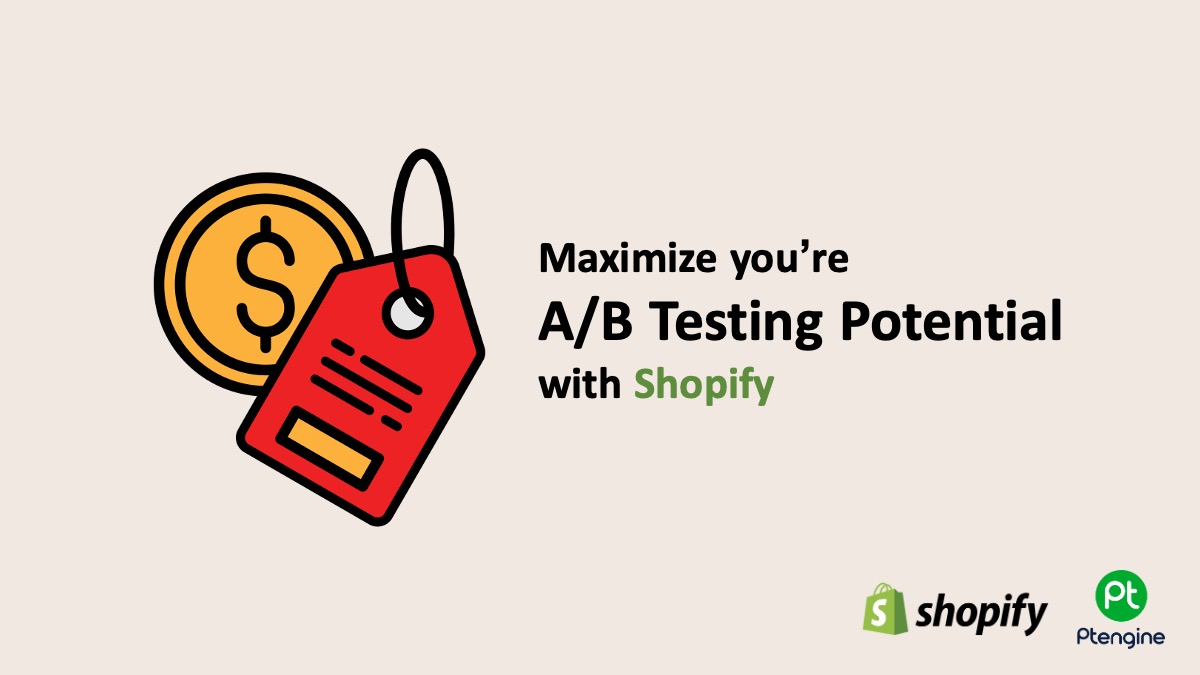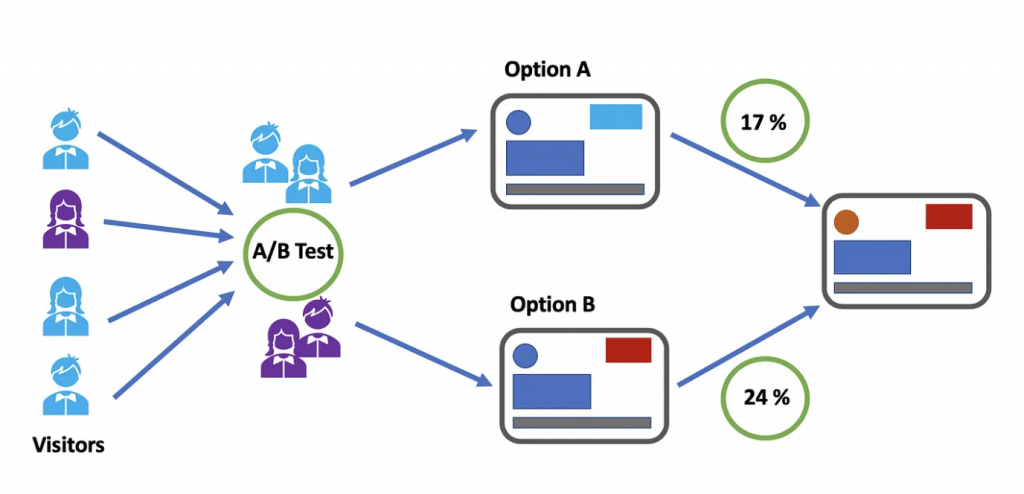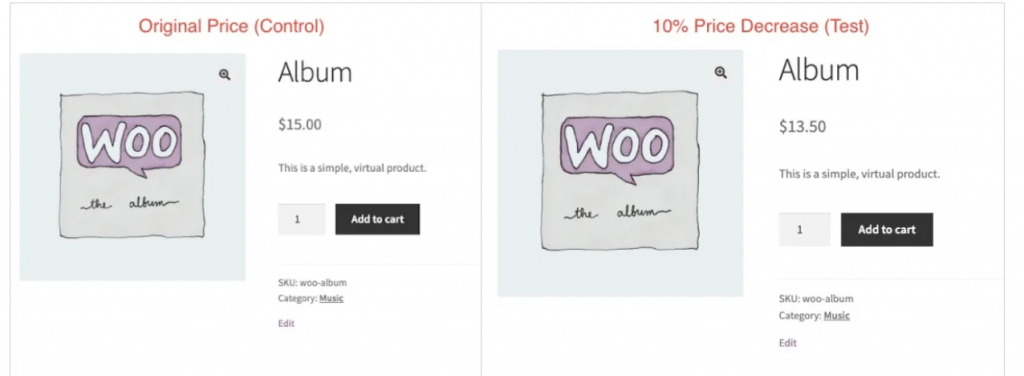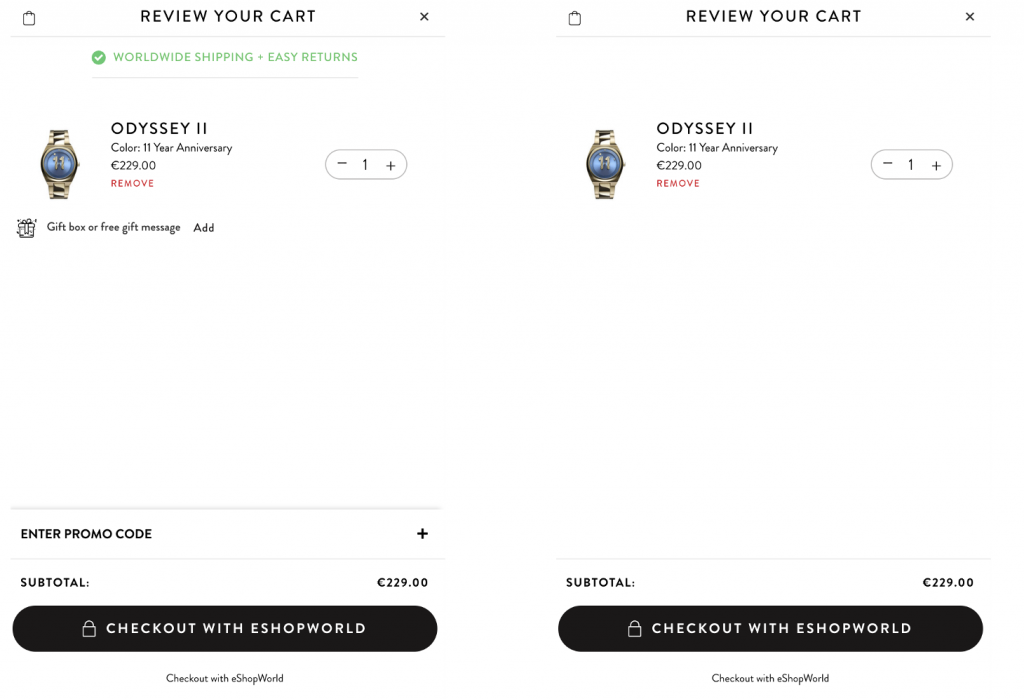blog»Conversion Rate Optimization»A/B Testing for Pricing: How to Optimize Your Shopify Store for Success

A/B Testing for Pricing: How to Optimize Your Shopify Store for Success
2024/07/29
You can read this article in about 22 minutes
Introduction
Pricing plays a crucial role in e-commerce success. It’s not just about setting a price and hoping for the best; it’s about finding the perfect balance that appeals to your customers and maximizes your revenue. One of the most effective ways to achieve this balance is through A/B testing.
A/B testing, or split testing, allows you to compare two versions of a pricing page to see which one performs better. By running these tests, you can gather valuable data on customer preferences and behavior. This data helps you make informed decisions, ultimately leading to higher conversion rates and increased sales.
For Shopify store owners, A/B testing is a game changer. It provides clear insights into what works and what doesn’t on your pricing pages. Whether you’re testing different price points, discount offers, or payment plans, A/B testing helps you fine-tune your strategies.

In this guide, we’ll walk you through the process of A/B testing your pricing pages on Shopify. We’ll cover everything from setting up your tests to analyzing the results. You’ll also see real-life examples of successful A/B tests on Shopify stores, giving you practical insights to apply to your own business.
Ready to optimize your pricing strategy and boost your sales? Let’s dive into the world of A/B testing for pricing pages on Shopify.
Why A/B Test Your Pricing Pages?
A/B testing your pricing pages is crucial for several reasons. First and foremost, it helps you understand your customers better. By testing different pricing strategies, you can see which ones resonate most with your audience. This understanding allows you to tailor your offerings to meet their needs, ultimately driving more sales.
Another key benefit is the potential to increase conversion rates. Small changes in pricing can significantly impact how customers perceive value. For instance, you might find that a slightly lower price point leads to more purchases, or that offering a bundle deal encourages customers to spend more. Through A/B testing, you can identify these opportunities and optimize your pricing accordingly.

Moreover, A/B testing helps reduce guesswork. Instead of relying on intuition or industry trends, you can base your decisions on actual data from your own customers. This data-driven approach ensures that your pricing strategies are effective and relevant.
Running A/B tests also enables you to experiment with different pricing elements. You can test various price points, discount offers, and even the layout of your pricing page. Each of these elements can influence your customers’ buying decisions. By systematically testing them, you can uncover the most effective combinations.
Finally, A/B testing your pricing pages on Shopify is straightforward. With the right tools and a clear strategy, you can set up tests, gather data, and make informed decisions with ease. The insights gained from these tests can lead to continuous improvement and long-term success for your e-commerce business.
How to Conduct A/B Testing on Pricing Pages
Conducting A/B testing on your pricing pages may seem daunting, but it’s a straightforward process when broken down into manageable steps. Here’s a step-by-step guide to help you get started:
1. Set Clear Goals and Hypotheses
Before you begin, define what you want to achieve with your A/B test. Are you looking to increase your conversion rate, boost average order value, or reduce cart abandonment? Setting clear goals will help you measure the success of your tests.

Next, formulate hypotheses. For example, you might hypothesize that offering a 10% discount on bundled products will increase sales. These hypotheses will guide your testing process and help you focus on specific changes. For a detailed guide on creating effective hypotheses, check out this Step-by-Step Guide to Formulating a Hypothesis for A/B Testing.
2. Choose Variables to A/B-Test
Identify the elements of your pricing page that you want to test. Common variables include:
- Price Points: Test different price levels to see which one drives more conversions.
- Discounts and Promotions: Experiment with various discount types (percentage off, buy one get one free, etc.).
- Payment Plans: Offer options like monthly payments versus one-time payments.
- Layout and Design: Change the placement of prices, use different fonts, or highlight different features.
Choose one variable to test at a time to ensure your results are clear and actionable.

3. Create Variations
Using your chosen variables, create different versions of your pricing page. For example, if you’re testing price points, you might have one version with a $50 price and another with a $45 price. Ensure that the rest of the page remains identical to isolate the impact of the variable you’re testing.
4. Implement the A/B-Test
If you’re using Shopify, there are several apps available that make A/B testing easy, such as Optimizely, VWO, and Ptengine. These tools allow you to set up your tests without needing advanced technical skills.
5. Run the A/B-Test
Launch your A/B test and allow it to run for a sufficient period. The duration will depend on your traffic volume, but aim for at least a few weeks to gather enough data. Ensure that your test reaches a statistically significant number of visitors to provide reliable results.
6. Analyze the Results
Once your test has run its course, analyze the results to determine which variation performed better. Look at your key metrics, such as conversion rates, average order value, and revenue. Use the data to decide whether to implement the winning variation permanently or conduct further tests.
7. Iterate and Optimize
A/B testing is an ongoing process. Use the insights gained from each test to inform future experiments. Continually refine your pricing strategies to stay responsive to your customers’ needs and market trends.
By following these steps, you can effectively conduct A/B testing on your pricing pages and make data-driven decisions that enhance your Shopify store’s performance.
Tips for A/B Testing for Pricing in Shopify
Running A/B tests on Shopify can be highly effective if done correctly. Here are some practical tips to ensure your A/B testing efforts yield valuable insights and drive better performance for your pricing pages.
1. Utilize Shopify’s Built-in Tools and Apps
Shopify offers various apps that simplify the A/B testing process. Tools like Optimizely, VWO, and Ptengine are popular choices among Shopify store owners. These apps integrate seamlessly with Shopify, allowing you to set up, run, and analyze tests without needing advanced technical skills.
2. Start with High-Impact Elements
Focus on testing elements that are likely to have the most significant impact on your conversion rates. These can include:
- Headline and Description: Test different ways of presenting your product value.
- Call-to-Action (CTA): Experiment with various CTA texts and button designs.
- Pricing Structures: Compare different pricing models, such as one-time purchases vs. subscription plans.
- Discount Offers: Try different types and levels of discounts to see which ones resonate most with your audience.
3. Keep Tests Simple and Isolated
To ensure that your results are clear and actionable, test one variable at a time. This isolation helps you pinpoint exactly what change led to any observed difference in performance. Avoid running multiple tests on the same page simultaneously, as this can lead to confusing results.
4. Ensure a Sufficient Sample Size
For your A/B test to be statistically significant, you need a large enough sample size. If your store has low traffic, you may need to run the test for a longer period to gather enough data. Aim for a minimum of a few hundred visitors per variation to ensure your results are reliable.
5. Monitor and Analyze Results Carefully
Use the analytics tools provided by your A/B testing app to monitor the performance of your variations. Look for significant differences in key metrics like conversion rates, average order value, and bounce rates. Ptengine, for instance, offers robust analytics that can help you dig deeper into your data.
6. Iterate Based on Findings
After analyzing your results, implement the winning variation and continue testing other elements. A/B testing is an ongoing process of refinement. Each test provides insights that can guide future experiments, helping you continually optimize your pricing strategies.
7. Document and Share Your Results
Keep a detailed record of your tests, including your hypotheses, test variations, duration, and outcomes. Sharing these insights with your team can help improve overall decision-making and strategy development. Documentation also prevents repeating tests and helps track long-term improvements.
8. Leverage Customer Feedback
In addition to quantitative data from your A/B tests, consider qualitative feedback from your customers. Use surveys, reviews, and direct feedback to understand the why behind your test results. This combined approach can provide a more comprehensive view of your pricing strategies’ effectiveness.
By following these tips, you can run effective A/B tests on your Shopify pricing pages, gaining valuable insights that drive better performance and higher sales. Keep testing, analyzing, and refining to stay ahead in the competitive e-commerce landscape.
Real-Life Example: Successful A/B Test by MVMT Watches
Seeing how established e-commerce businesses have leveraged A/B testing can provide valuable insights and inspiration for your own efforts. Here’s a real-life example of a successful A/B test conducted by MVMT Watches, a popular online watch retailer.

Example: Optimizing Price Points and Checkout Flow
Company: MVMT Watches
Test Objective: Increase conversion rates by optimizing the pricing page and checkout flow.
Hypothesis: Simplifying the checkout process and making the price points more attractive will result in higher conversions.
Test Setup:
- Version A: Original checkout flow with a detailed multi-step process.
- Version B: Streamlined, single-page checkout with clearer price breakdowns and promotional banners.

Changes Implemented:
- Streamlined Checkout: MVMT reduced the number of steps in the checkout process, aiming to make it quicker and less complicated for customers.
- Promotional Offers: They introduced promotional banners highlighting limited-time discounts and free shipping options during the checkout process.
Results:
- Conversion Rate Increase: The streamlined checkout process led to a 15% increase in conversion rates.
- Higher Average Order Value: Highlighting promotional offers effectively increased the average order value by 10%.
- Reduced Cart Abandonment: The simplified process and clear value propositions reduced cart abandonment rates by 20%.
Takeaway: This case study from MVMT Watches demonstrates that simplifying the checkout process and clearly communicating promotional offers can significantly boost conversion rates and reduce cart abandonment. By focusing on making the customer journey smoother and highlighting value propositions, e-commerce businesses can enhance user experience and drive higher sales.
These insights from MVMT Watches highlight the effectiveness of A/B testing in optimizing pricing pages and checkout flows on Shopify stores. By continually experimenting and refining their approach, businesses can discover strategies that work best for their audience, leading to sustained growth and success.
Conclusion
A/B testing your pricing pages is a powerful way to optimize your e-commerce strategy. By understanding your customers’ preferences and behaviors, you can make informed decisions that drive higher conversions and increased revenue. Whether you’re testing different price points, discount offers, or payment plans, each experiment brings you closer to finding the optimal pricing strategy for your Shopify store.
Remember, the key to successful A/B testing lies in setting clear goals, choosing impactful variables, and using reliable tools like Ptengine to implement and analyze your tests. As shown in the real-life example of MVMT Watches, even small changes to your pricing pages and checkout flow can lead to significant improvements in performance.
Don’t be afraid to experiment and iterate. A/B testing is an ongoing process that allows you to continually refine your approach based on data and insights. By keeping your tests simple and focused, and by documenting your results, you can build a strong foundation for continuous optimization.
Start your A/B testing journey today and unlock the full potential of your e-commerce business. With the right strategy and tools, you can create pricing pages that not only attract more customers but also drive them to complete their purchases. Use the tips and examples provided in this guide to inform your own experiments and take your Shopify store to new heights.
Ready to optimize your pricing strategy and boost your sales? Dive into A/B testing for your pricing pages on Shopify and see the difference it can make. For further insights and advanced analytics, consider leveraging Ptengine to enhance your A/B testing efforts and achieve even greater results.